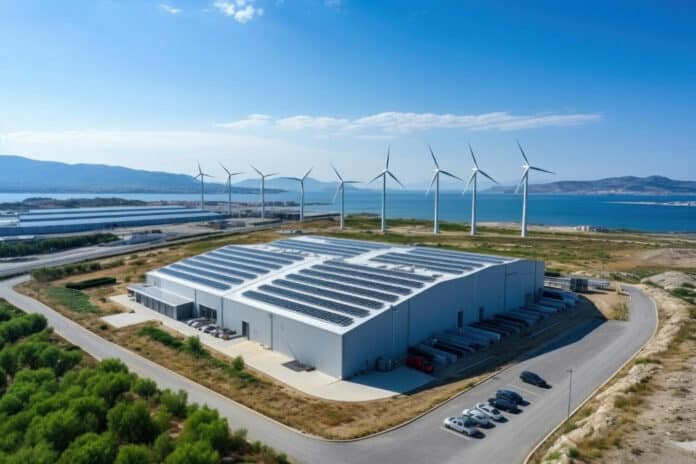
By Ashwini Sakharkar 15 Jun, 2024
Collected at: https://www.techexplorist.com/researchers-developing-liquid-battery-renewable-energy-storage/85158/
As California swiftly embraces renewable energy, it urgently requires innovative technologies for grid energy storage. Solar power generation diminishes during the night and in the winter, while wind power is variable. Currently, the state heavily relies on natural gas to balance the intermittent nature of renewable power.
A team from Stanford University is dedicated to enhancing renewable energy storage options through their research on a promising technology – liquid hydrogen storage.
“The electric grid uses energy at the same rate that you generate it, and if you’re not using it at that time, and you can’t store it, you must throw it away,” said Robert Waymouth, the Robert Eckles Swain Professor in Chemistry in the School of Humanities and Sciences.
Waymouth is leading a Stanford team to explore promising emerging technology for storing renewable energy: liquid organic hydrogen carriers (LOHCs). However, hydrogen is already employed as a fuel source, and for power generation, its containment and transportation present significant challenges.
“We are developing a new strategy for selectively converting and long-term storing of electrical energy in liquid fuels,” said Waymouth, senior author of a study detailing this work in the Journal of the American Chemical Society. “We also discovered a novel, selective catalytic system for storing electrical energy in a liquid fuel without generating gaseous hydrogen.”
New energy storage technologies are being researched to complement lithium-ion batteries used for grid storage, smartphones, and electric vehicles. One promising candidate is LOHCs, which have the potential to store and release hydrogen efficiently, functioning like “liquid batteries” that can store energy and convert it into usable fuel or electricity as needed.
The Waymouth team is delving into the potential of isopropanol and acetone as key elements in hydrogen energy storage and release systems. Isopropanol, commonly known as rubbing alcohol, represents a promising high-density liquid form of hydrogen that can be efficiently stored or transported through existing infrastructure. When the time comes, it can be used as a clean fuel in a fuel cell or to release hydrogen without emitting carbon dioxide.
However, there is currently a need for more efficient methods to produce isopropanol using electricity. The process involves converting two protons from water and two electrons into hydrogen gas, which can then be used by a catalyst to produce isopropanol.
“But you don’t want hydrogen gas in this process,” said Waymouth. “Its energy density per unit volume is low. We need a way to make isopropanol directly from protons and electrons without producing hydrogen gas.”
Daniel Marron, the primary author of this research, has made a significant breakthrough in addressing a key issue. His innovative catalyst system efficiently converts acetone into LOHC isopropanol without generating hydrogen gas. This system, utilizing iridium as the catalyst and cobaltocene as a co-catalyst, has defied prior expectations and offers a promising solution.
The use of cobaltocene as a co-catalyst has proven to be remarkably effective, providing protons and electrons directly to the iridium catalyst, marking a significant advancement in this field of study.
Cobalt is a highly sought-after material in the battery industry, and the Stanford team’s breakthrough in understanding cobaltocene’s properties could pave the way for the development of new catalysts for various processes. By exploring the use of more widely available, non-precious earth metal catalysts like iron, they hope to make future LOHC systems more affordable and easily scalable.
“This is basic fundamental science, but we think we have a new strategy for more selectively storing electrical energy in liquid fuels,” said Waymouth.
The advancement of LOHC systems promises to enhance energy storage for industrial and individual solar or wind facilities. Despite the intricate work involved, Waymouth eloquently summarizes the process as remarkably elegant.
“When you have excess energy, and there’s no demand for it on the grid, you store it as isopropanol. When you need the energy, you can return it as electricity.”
Journal reference:
- Daniel P. Marron, Conor M. Galvin, Julia M. Dressel, and Robert M. Waymouth. Cobaltocene-Mediated Catalytic Hydride Transfer: Strategies for Electrocatalytic Hydrogenation. Journal of the American Chemical Society, 2024; DOI: 10.1021/jacs.4c02177

Leave a Reply